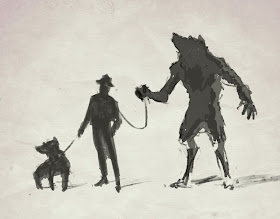With thanks to everyone who offered comments and email
advice following my last rambling post, I am pleased to report that I think I
may have made some progress. Perhaps.
The first, and probably most significant, point is that my
Spanish army is a fair size already, so any infantry I add to it is just
organic expansion rather than any major change in the Grand Plan – or it may
just be completing some missing bits from the Grand Plan.
I acquired the unpainted bicorne troops along the way – some NapoleoN,
some Falcata, and I have access to more Falcatas if I need them. My 1812-style
army currently has, I reckon, 11 battalions of troops which would not sit comfortably
with any white-coated 1808 types.
So big idea No.1 was let’s paint up 11 or so battalions of
bicornes, and then I can field an 1808 or an 1812 army by switching the line
infantry. Cool, eh? This is very attractive, but has two downsides:
(1) I would need to get in a lot more bicorne soldiers to
make up this amount – the project just grew arms and legs. A bit like building
a second house to get rid of half a dozen bricks you found in the garden.
(2) There is the issue of inconsistency with the dating of
the other Peninsular armies which I mentioned previously.
So, somewhat reluctantly, I have moved on to not-quite-so-big
idea No.2. This is to identify units which might reasonably have been seen in
bicornes in 1812, and add them to the army I already have. Further research
indicates that the Milicias Urbanas
might be just the boys. The JM Bueno picture at the top, admittedly, shows uniforms from 1808, but it
seems these chaps looked like this for much of the war. There was a variety of
uniforms for the various towns and cities, but all along this general style. We
might debate how far from home some of these units might be deployed, but they
certainly saw plenty of active service. The Milicias Urbanas of Ciudad Rodrigo,
for example (and not unreasonably), were present at the siege of Ciudad Rodrigo
(the French being the besiegers), and were dressed identically to the Madrid soldier pictured
in the last post.
The Milicia Urbana are necessarily going to be poor quality
troops, which frequently adds to their unpredictability and entertainment value
on the tabletop, and they also seem to have had interesting flags. My current
thinking, then, is that I have (or can easily scratch together) enough figures
for about 4 battalions of MU, plus associated skirmishers, and thus I can run up an
extra brigade for Morillo’s Division. If they only do garrison duties, that
should still get them a few outings. I think I’ll go with this.
Strangely, for such a vague decision, I feel quite
comforted. Having made a choice, I don’t actually have to do anything about
it for a while. But at least the things I am not doing will be different
things. I am reminded of the bit in Herman Hesse’s Steppenwolf where the main character decides he will commit
suicide, but that there is no rush – the decision is an end in itself...


This is very interesting! And a subject to seems to be avoided more than t should. After all, everyone wants the crack units, i.e., the Guards, elite or veteran line units, etc. We ought to see more militia and/or garrison units on the table regardless of period. It would certainly add flavor and color to our armies.
ReplyDeleteBest Regards,
Stokes
Got to agree with HUvB. Too many 'game winners' are habitually fielded in all periods and this just doesn't reflect the reality. Your view seems pretty sound to me, but the reference to Hesse is dangerously close to high culture and you've no right bringing that into wargaming . . .
ReplyDelete;O)
I too like the more militia idea, for one it does add a lot of uncertainty in a game and there uniforms all look very cool and different from the norm, I'd go for the Badajoz uniform myself, but that's me!
ReplyDelete